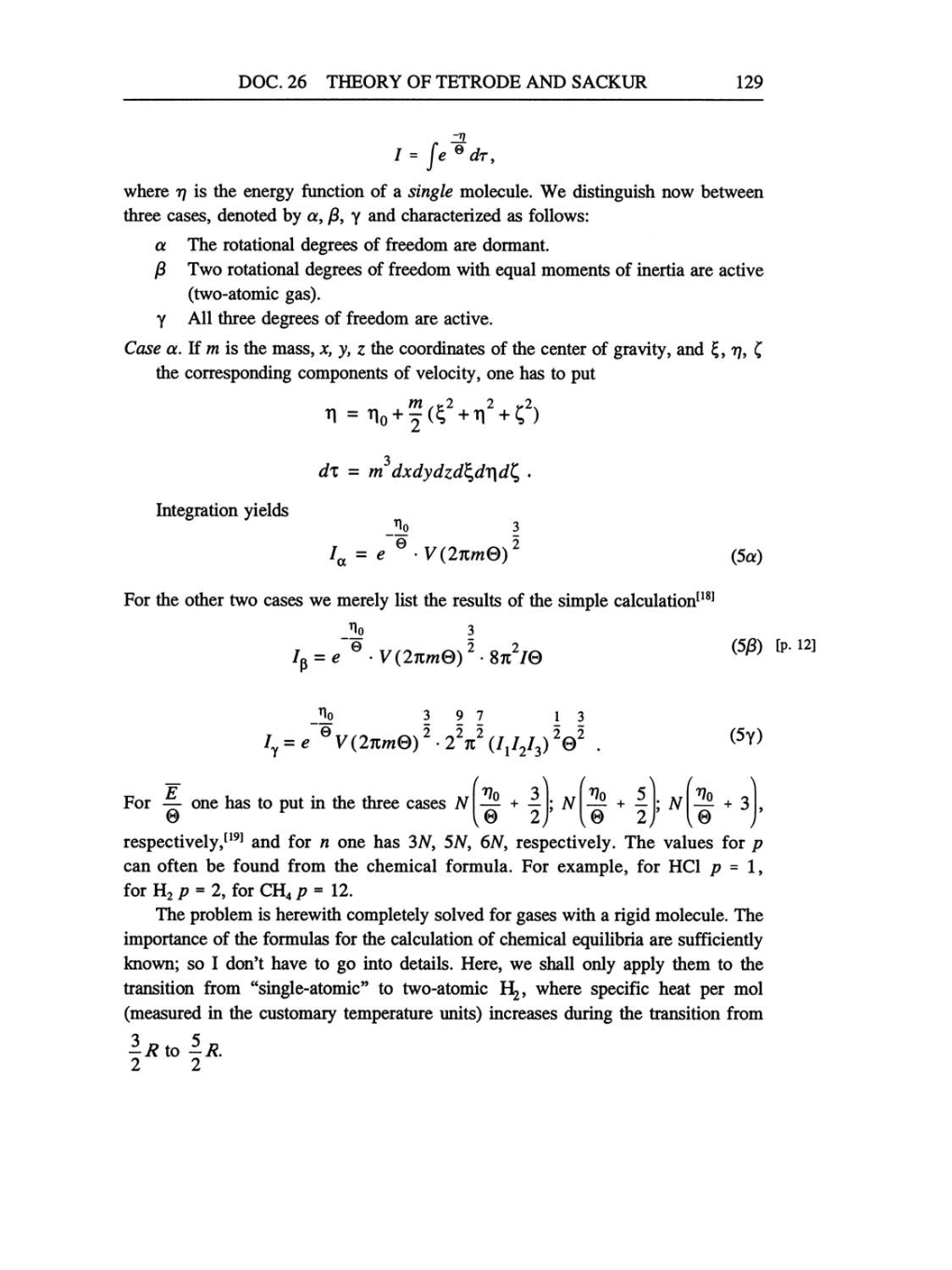DOC. 26 THEORY OF TETRODE AND SACKUR
129
/
=
Je
0
dr,
where
77
is the
energy
function
of
a
single
molecule. We
distinguish now
between
three
cases,
denoted
by a,
ß,
y
and
characterized
as
follows:
a
The rotational
degrees
of
freedom
are
dormant.
ß Two rotational
degrees
of freedom with
equal
moments
of
inertia
are
active
(two-atomic gas).
y
All three
degrees
of
freedom
are
active.
Case
a.
If
m
is the
mass,
x,
y,
z
the coordinates
of
the center of
gravity,
and
£,
17,
(
the
corresponding components
of
velocity, one
has to
put
"
2 2
-2.
n
= *i0+
2
^
+1i
)
3
dx
=
m dxdydzd^dr\dC,
.
Integration yields
3
Ia
=
e
@
V(2nmQ)2
(5a)
For the other two
cases we
merely
list
the results
of
the
simple
calculation[18]
3
V(2itme)
2
(5~
[p.
12]
Ho
3 9 7
13
Iy
=
e
&
V(2nmQ)2
•
22ti2
{IJJJ
V
.
(5y)
E
For
-
one
has
to
put
in the three
cases
N
0
F
Vo
3X
+.
-
©
2)
.Nk0+
(¼0
2)'
Vo
+3
I©
respectively,[19]
and for
n
one
has
3N, 5N, 6N, respectively.
The values
for
p
can
often be found
from the chemical formula. For
example,
for
HCl
p
=
1,
for
H2
p
=
2,
for
CH4
p
=
12.
The
problem
is herewith
completely
solved for
gases
with
a rigid
molecule. The
importance
of
the
formulas for the calculation
of
chemical
equilibria are sufficiently
known;
so
I don't have to
go
into details.
Here,
we
shall
only apply
them to the
transition from
"single-atomic"
to two-atomic
H2,
where
specific
heat
per
mol
(measured
in the
customary temperature
units)
increases
during
the transition from
-Rio
5/2R.
